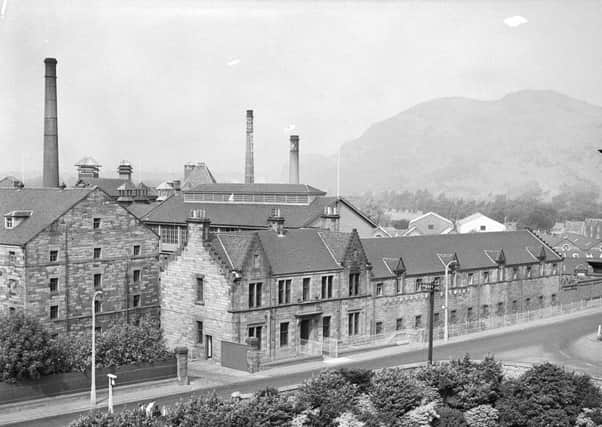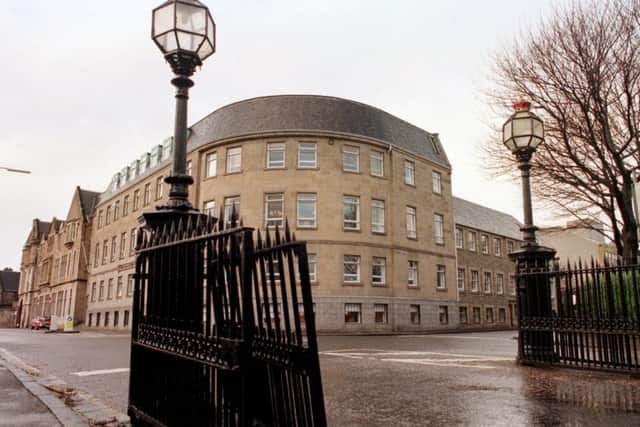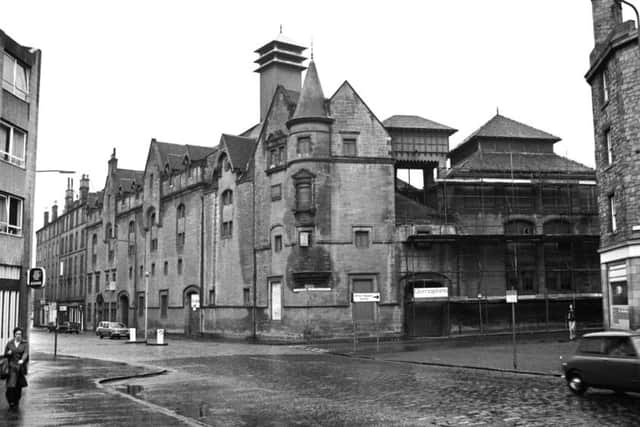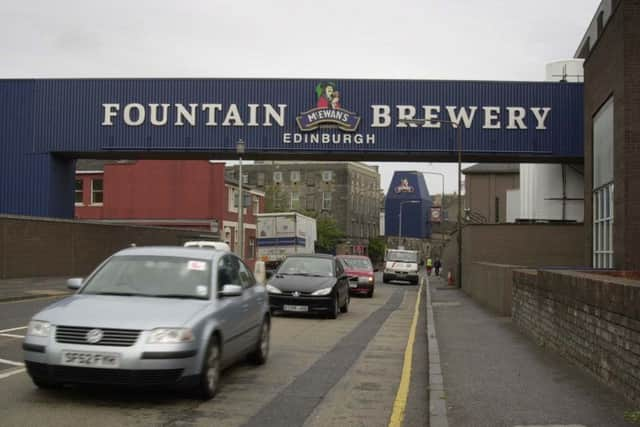When Edinburgh was a brewing powerhouse


Cities often find themselves defined by their main industries. Glasgow and Aberdeen are famed as great centres for marine engineering and fishing respectively, while Dundee has its three Js: jute, jam and journalism.
Edinburgh, like the City of Discovery, also boasts a three-pronged maxim, the three Bs: biscuits, books and beer.
Advertisement
Hide AdAdvertisement
Hide AdThere were once as many chimney stalks in central Edinburgh as there were kirk spires, and the air was heavy with the former’s pungent vapour of malt and hops. It’s part of the reason why the town earned its unenviable sobriquet, Auld Reekie.


At the industry’s height in the late 19th and early 20th centuries, there were 38 active breweries in the Capital; the culmination of several hundred years of tradition and expertise. Brewing is one of the city’s most ancient and important industries.
Beginnings
The origins of brewing in Edinburgh go back to the 12th century monks of Holyrood Abbey, who took advantage of the clear spring water for the production of their ale.
In the eighteenth century, when Edinburgh set taxation on ale, Holyrood ales were unaffected as the production centre lay outside of the city boundary.


Among the most successful firms were those of William Younger, who had started business in 1749 in Leith later moving to the Holyrood area and, William McEwan who founded the famous Fountain Brewery in 1856.
Scottish ales also proved hugely-popular overseas, and William Younger and William McEwan owed much of their early success to strong export figures.
“Edinburgh was the most important brewing centre in the UK, ahead of London and Burton-on-Trent,” says Scottish brewing history expert Allan McLean, “In fact, at one time, it was the most important brewing centre on the face of the earth”.


Advertisement
Hide AdAdvertisement
Hide AdMuch of Edinburgh’s early success was due to its geography, as Allan explains: “Edinburgh had good transport and good water sources. The town lay within what they called the ‘charmed circle’, an area where the quality of the underground springs was perfect for the purpose of brewing. This dictated where a lot of the breweries were built.”
Into the latter part of the 19th century, the McEwan’s facility at Fountainbridge was reputed as the largest single-ownership brewery in Great Britain, producing two million barrels a year.
Two of Edinburgh’s most successful alcohol manufacturers were also responsible for two of the city’s most prominent public buildings. In 1894, William McEwan parted with £115,000 of his own money to construct a new graduation hall for Edinburgh University: the McEwan Hall. Not to be outdone, distiller Andrew Usher (whose father - also Andrew - was a famous local brewer) followed suit by gifting a similar amount for the creation of a new concert hall. Sadly, the Usher Hall would not be completed until long after his death.
At the turn of the nineteenth century, Edinburgh-produced ales were enjoyed as far away as India and Australia. According to Allan, though, this reliance on far-flung colonies would eventually lead to decline.


“After the War the brewing industry was hit badly by the fall of the empire, and when the exports dried up, a lot of the breweries closed for good. The market completely changed in the 1950s, and many long-established companies disappeared or were merged and amalgamated with others.”
William Younger and William McEwan combined in 1930 to form Scottish Brewers. After the Second World War and particularly in the late 1950s, radical changes occurred in the production and distribution of beers. This was accompanied by frequent amalgamations and takeovers involving many smaller brewers. By the middle of the 20th century, McEwan’s had become the dominant party in the McEwan Younger venture, and a full merger was undertaken in 1959. The Abbey Brewery, previously Youngers Brewery was closed down in 1956 and converted to flats. The mighty Scottish and Newcastle formed in 1961 originated from the combination of the humble McEwans and Youngers breweries.
In 1973, Scottish and Newcastle’s Fountainbridge brewery was rebuilt on recently-cleared land opposite its original site. The move allowed the firm to invest in pioneering new technologies and improve brewing procedures.
Advertisement
Hide AdAdvertisement
Hide AdThe Fountain Brewery remained active until 2004 when production was shifted to the Caledonian Brewery on Slateford Road. Owners Scottish and Newcastle were bought out by Heineken in 2008. Since 2011, English firm Wells & Young’s has been responsible for keeping the McEwan’s brand alive. Founded in 1869, Caledonian Brewery is now the sole-remaining Victorian-era plant still in operation in Edinburgh. Much of the former Fountain Brewery site has since been redeveloped, or is due to be redeveloped, for offices and housing. Other famous breweries, such as those at St Leonards and Craigmillar followed a similar fate many decades earlier. Scottish and Newcastle’s Holyrood Brewery was razed to make way for the Scottish Parliament.
With just one major brewery left in the city, you would be forgiven for thinking that Edinburgh’s best brewing days have long since past. But, according to Allan McLean, you’ld be wrong.


“There are as many breweries in Scotland today as there ever have been; they’re just on a much smaller scale.”
There are currently eleven microbreweries in operation in the Edinburgh area, producing bespoke lagers and ales of a high quality to a growing customer base.
The distinctive whiff of beer-making may be missing from many of her districts, but Auld Reekie’s brewing days are far from over yet.
For Scottish brewing fans, a new exhibition “Raise your Glass” a history of Brewing & Malting in Musselburgh will open on April 6 2017 at the Musselburgh Museum.